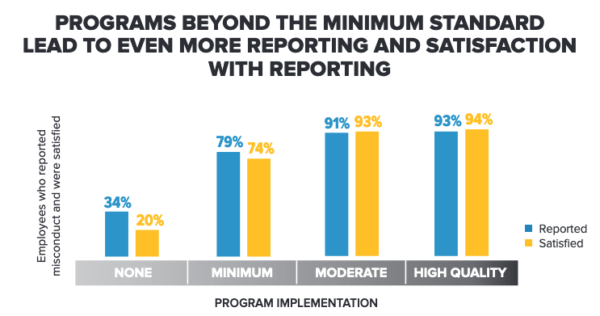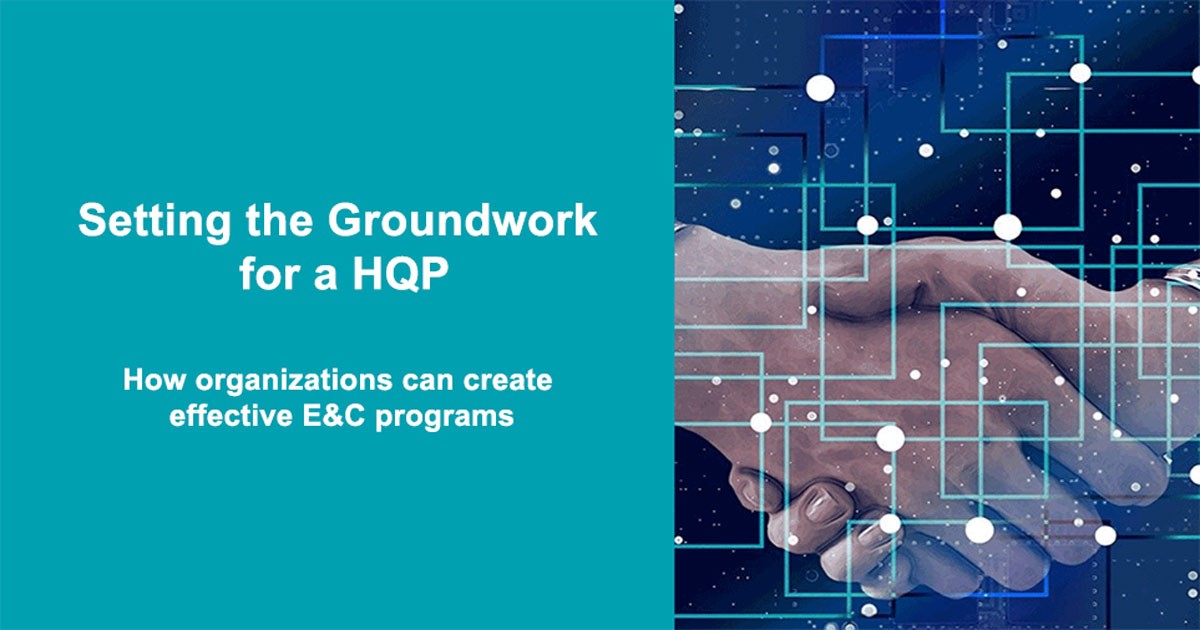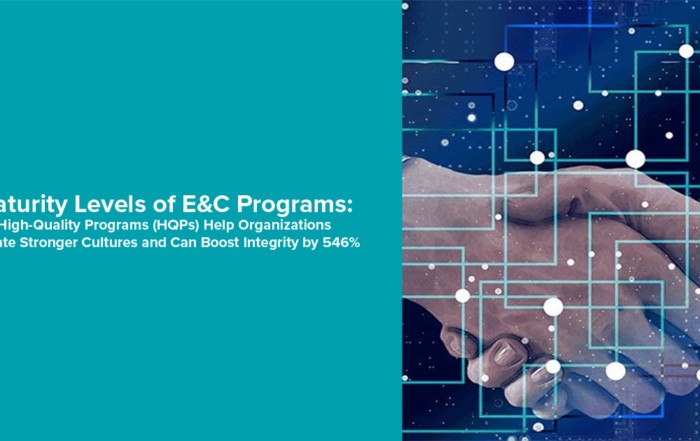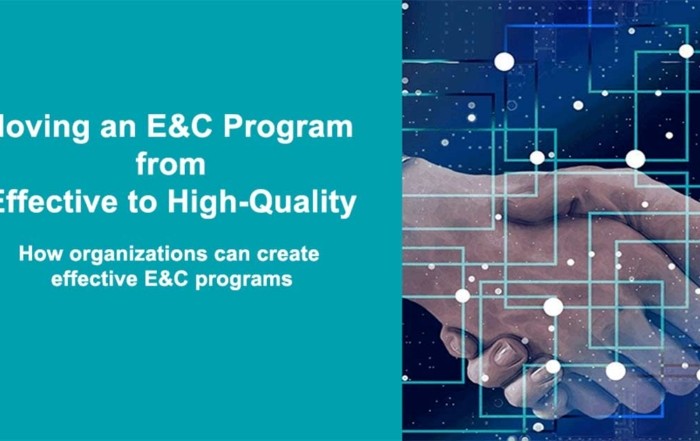In our last post, we reviewed the DoJ guidance for its prosecutors who are investigating companies that are accused of misconduct and learned their overarching questions and priorities. In this post, we go beyond the basic requirements that the DoJ outlines and look at how organizations can create effective ethics and compliance programs.
At many organizations, ethics and compliance (E&C) programs are now specific functions with their own leaders and dedicated resources and employees. In some cases, these programs are born out of necessity in the aftermath of wrongdoing. In many other instances, E&C programs arise from an organization’s voluntary investment in the strategic goal of conducting business with integrity. Regardless of why they were created, E&C programs play an important role in the viability and ongoing success of any institution.
Driven by a desire to compete in full compliance with the law, organizations often invest tremendous resources in the establishment of internal E&C programs designed to prevent wrongdoing from ever taking place. These same organizations also put in place formal systems to encourage employee reporting of suspected misconduct, and they develop procedures for investigating and responding to these reports or other evidence of possible wrongdoing.
These are good steps in the right direction. However, ECI research has found that organizations that implement the best practices of effective E&C programs experience myriad positive results. Tangible results, for example, include increased ROI and financial outcomes. Other slightly less tangible results of implementing an effective E&C program include happier employees that suffer from less stress and pressure and are less likely to leave, effectively reducing employee turnover.
Effective E&C programs lead to stronger workplace cultures, and the effect that strong cultures have on favorable outcomes is staggering. ECI conducted a survey of more than 18,000 employees in organizations across the world and found that favorable outcomes increase exponentially in organizations with effective E&C programs. The 2018 Global Business Ethics Survey, Measuring the Impact of Ethics and Compliance Programs, found that favorable outcomes were:
- 11 times more likely to occur when employees are encouraged to base decision-making on organizational ethics and values;
- 12 times more likely to occur when employees felt that their supervisors would hold them accountable for wrongdoing;
- 14 times more likely to occur when employees felt encouraged to speak-up even with bad news.
Data from the 2018 Global Business Ethics Survey Report, Measuring the Impact of Ethics & Compliance Programs
Favorable outcomes of effective ethics and compliance programs

Impact of effective corporate compliance programs on reporting
When compliance programs are built to a standard well beyond the minimum, employees are more satisfied with reporting and speaking up. The data below indicates that in organizations with high-quality ethics and compliance programs, the degree of satisfaction with the reporting process is much higher. This indicates that when the elements of effective corporate compliance programs are ingrained in the organization, your employees will feel more comfortable speaking up about misconduct.

How to Create an Effective Corporate Compliance Program
Now that you know what an effective ethics and compliance program is, the next step is to begin implementing it in your organization. ECI’s High-Quality Ethics and Compliance Program Framework and Assessment Tool allows you to regularly review and assess your ethics and compliance program, determine your strengths and risk factors and gives you the key insight to focus on areas that need improvement. Read more about the actionable steps you can take to assess your program in The Chief Ethics and Compliance Officer’s Guide to High-Quality Programs.
It should be noted that, according to the data, the more elements of high-quality corporate compliance programs you include, the more favorable your outcomes will be. Fifteen total favorable outcomes were measured in the survey, including those relating to speaking-up, bending the rules, safety in reporting, fear of retaliation and more.
Download the Guide Now
In our next post, we will explore how organizations from a wide variety of industries that have raised the bar even higher are not satisfied with the mere compliance, “check the box” or even an effective E&C program.
For more information on our updated HQP Assessment Tool, contact: hqp@ethics.org or visit www.ethics.org/hqp/.
Other HQP Articles in this Series
PRESS RELEASE: Ethics & Compliance Professionals Overestimate the Strength of their Organizations’ Cultures, Findings from NAVEX and the Ethics & Compliance Initiative Show
Ethics & Compliance Professionals Overestimate the Strength of their Organizations’ Cultures, Findings from NAVEX and the Ethics & Compliance Initiative Show Results from ECI’s High-Quality Program (HQP) Assessments suggest organizations must mature key program
Maturity Levels of E&C Programs
Maturity Levels of E&C Programs: High-Quality Programs (HQPs) Help Organizations Create Stronger Cultures and Can Boost Integrity by 546% In our previous posts about high-quality ethics & compliance programs (HQPs), we explored in detail how
Moving an E&C Program from Effective to High-Quality
In our last post, we looked at how organizations can create effective ethics and compliance programs. In this last of our series, we explore how trailblazing organizations take this a step further and create



